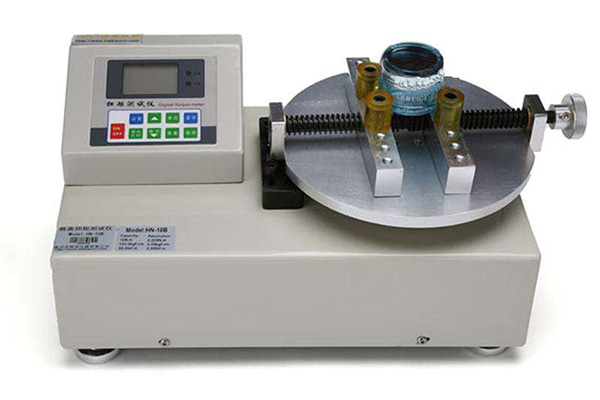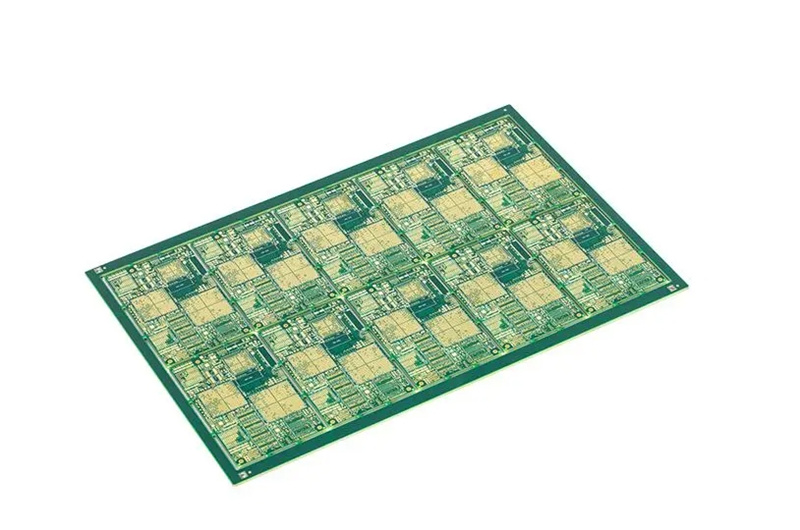Bottle caps are used in the food, beverage, wine, chemical, and pharmaceutical industries to package bottled items. Manufacturers manage the bottle cap’s torque when it’s fastened and opened.
The cap opening torque is the torque required to unscrew the cap and reflects its difficulty. In physics, torque is the magnitude of the moment, equal to the product of the force and force arm. The opening torque value affects the transport and consumption of container-packaged pharmaceuticals. The correct torque value affects product delivery and customer satisfaction.
How to measure bottle cap torque
The bottle cap torque tester measures bottle locking and opening torque. The bottle cap torque tester consists of a test box, a fixture, and a torque sensor. It is used to check the tightness of the packaging on beverage and wine bottle caps to make sure they are tight.
Principle
The bottle body is operated by spinning the bottle cap, causing the torque sensor to test the bottle cap clockwise, or counterclockwise torque.
Why do you have to measure the value of the cap torque?
The cap opening torque is the torque required to unscrew the cap and describes its difficulty. If the opening torque value of the bottle cap is low, it will introduce certain risks to the sealing performance of the package, and problems like liquid leakage and volatilization are prone to occur.
It will affect product quality and total capacity; and if the opening torque value of the bottle cap is too large, it will increase the difficulty of opening the package, requiring other external forces to open the package, which not only increases the difficulty for the consumer but also increases the chances of accidents such as scratching hands due to opening the package. It is important to manage bottle cap opening torque.
Factors Affecting Torque Tester Accuracy
Here are the main things that affect how accurate the torque tester is:
1. Temperature: If the special operating temperature isn’t mentioned in the product’s instructions, the instrument works best between -10 and 40 °C. The test results will be wrong if the operating temperature is higher than the operating temperature.
2. The degree of uncertainty in the test results: After multiple tests, it’s normal for the results to be different each time, but the error of each test shouldn’t be too large, and the error of the test results should be within the allowed range.
3. Rotation: The test result will be different for any rotation angle in the horizontal case, but the difference shouldn’t be too big to go over the specification.
4. Discrimination: When it is not in an unbalanced state, the detected value will be wrong when it is being found.
5. The number of errors: When each part of the torque tester is tested on its own, the results should meet the error distribution requirements. If they don’t, the results of the tests will be wrong.
6. Eliminating rounding errors: The torque tester’s display of numbers may be off by a small amount because of rounding. If the accuracy of the test results is high, this rounding error will change how the whole work is done.
7. Repeatability: For the same load, the oil return error during multiple detections is more likely to be wrong if the error of the instrument itself is large.
To make sure that the torque tester’s test results are accurate, care should be taken to make sure the battery is strong enough before using it, to keep it from being pulled and bumped violently, and to not take it apart at will.
How much does the bottle cap torque tester that is automatic cost?
Automatic bottle cap torque testers cost between 5,000 and 8,000 US dollars on the market right now. Different bottle cap torque tester manufacturers charge different prices because they buy different parts, make their products in different ways, and have different levels of technical maturity and customer service after the sale.
How to use the cap opening torque tester to detect the cap torque?
Device parameters
Range: 20 N·m, 40 N·m, 50 N·m three specifications are available.
The test accuracy is level 1, and the resolution of the system is 0.001 N m.
The specimen clamping range of the equipment is Φ5 mm ~ Φ170 mm.
The device provides two test modes of opening force and locking force.
Test peaks are automatically held, ensuring that test results are correctly recorded.
Intelligent configurations such as overload protection, automatic reset and fault prompts ensure the safety of users’ operation.
Experimental procedure
1) Turn the torque meter’s power switch on and set the test mode and statistical quantity.
Putting the sample on the clamp and closing the clamp
3) Click the “Test” button and unscrew the bottle cap by hand. As the bottle cap is unscrewed, the instrument will automatically measure the sample’s maximum torque value and show that number as the sample’s opening torque.
Test results
Five samples were tested, and the opening torques of the five samples were 3.675 N·m, 3.276 N·m, 2.957 N·m, 3.146 N·m, and 3.382 N·m, respectively.
Scope of application
- It’s used to evaluate the torque value of medicine and food bottles, such as medicine bottles, beverage bottles, etc.
- It’s used to test the torque value of bottle cap locking and opening on eye drop bottles, hand cream, shoe polish (threaded connection), etc.
- It’s used for locking and opening nuts and bolts, or thermos bottle and cup tops (threaded connections).
Torque tester sensor installation
Common torque sensor installation methods:
1) The magneto-electric phase difference torque sensor must be centered, meaning the shaft system’s center line and the sensor’s elastic axis must coincide; otherwise, the sensor’s elastic axis will be bent, causing extra inaccuracies. When a hard connection can’t guarantee coaxiality, the two ends of the sensor must be connected with elastic couplings or nylon ropes to keep them from bending.
2) Position the magneto-electric phase difference torque sensor horizontally at no more than 15 degrees. Special requirements include installing it vertically and adding a thrust bearing to one end.
3) The snap ring strain-type torque sensor’s deformation length must be ensured. Find a reference surface, attach a pair of snap rings perpendicular to the shaft’s centerline, and then use the positioning sleeve to place the other pair. The positioning sleeve keeps the snap rings apart. Use the positioning rod to adjust the last pair of snap rings and the first pair.
Reverse the snap rings so the torque sensor groove is parallel to the torsion shaft; remove the alignment rod and install the sensor. The torque sensor’s force measuring rod should be slidably matched with the installation groove; then the two sides should be pressed with eight fixing screws, and the cover plate should be placed on the installation groove to ensure notch clamping and prevent force measuring rod clamping. Set the distance between the receiving antenna and the broadcasting antenna (which is fixed to the bottom plate) to 5*10mm.
4) Slip ring torque sensor installation is the same as magneto-electric phase difference torque sensor installation. Set the axis to 0.02mm-0.03mm. Turn the coupling by hand after installation to make the mechanical clearance equal to the left and right so the sensor is torque-free.
Otherwise, the reference point is inaccurate, and the initial torque can cause mistakes. Keep a gap of 6-10N/cm2 between the slip ring and the brush. Before changing pressure, brush the slip ring. After a long time, remove the sensor’s housing and clean the brick powder between the slip ring and brush holder with alcohol or acetone.
Torque tester buyers’ considerations
Bottle cap torque meter makers must comprehend the pain points and wants of customers and the market’s development trend while updating and enhancing equipment. This will affect the product’s future development direction and competitiveness in the market. Many bottle cap torque meter users experience inadequate measurement accuracy and poor stability, which affects product packaging and consumer experience. Instrument makers must address pain concerns one by one.
- Measurement precision influences bottle cap packaging torque detection.
- High-accuracy cap torque meters are more marketable.
- Stability is a key factor for users when acquiring pharmaceutical equipment.
- Strengthening the bottle cap torque meter improves detection and helps users make safer products.
Users care about cost-performance. Improving the cost performance of equipment, breaking the low price condition, and making greater efforts in product quality and service are conducive to improving product added value. Value users
FAQ:
How to ensure that the bottle cap has good torque and sealing?
The bottle cap’s outside diameter and inner plug height affect both its sealing and opening ability. When making a bottle cap mold, increasing the outer diameter and height of the inner plug makes the seal better. However, putting too much emphasis on the seal makes it harder to open the bottle cap.
The plastic anti-theft cap’s innovative anti-slip tooth shape enhances friction between the cap and the palm when consumers manually open the cap, facilitating unscrewing, opening, and grabbing the capping machine. In this approach, the bottle cap’s construction can simultaneously alleviate sealing and opening issues.
The bottle cap cutting ring cuts a bridge between the cap shell and the anti-theft ring. Adjusting the cutter’s cutting point size and distance between cutting points affects bottle cap opening torque.
During filling, the bottle cap and mouth should match; tightening and loosening should be smooth; and sealing should be good. This connection should reduce problems with opening and locking caused by too much torque and seal performance problems caused by too little torque.





Leave a Reply
You must be logged in to post a comment.